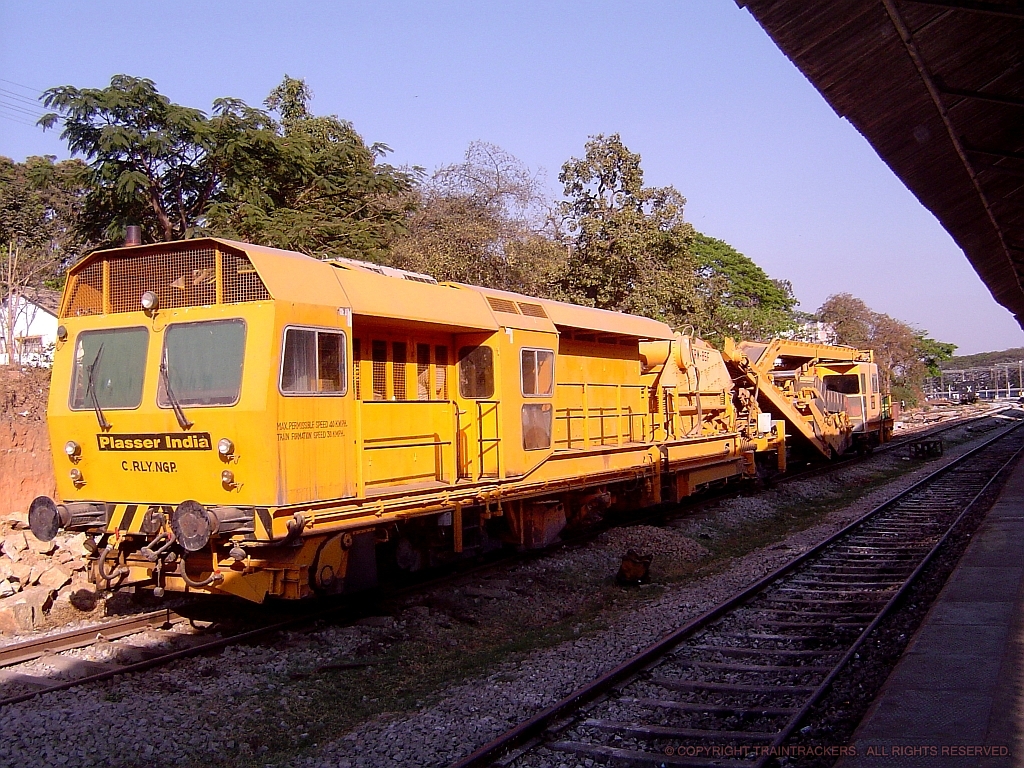
The ballast is an important component of the permanent way. Its quality has a decisive influence on the soundness of the track geometry and consequently on the costs of permanent way maintenance. An elastic and clean, well compacted but water permeable ballst bed is of major importance for stable, long-lasting track geometry. Shoulder cleaning is an economical course of action everywhere where there is sufficient strongbearing subsoil so that only the pollution of the ballst shoulder has to be removed in order to guarantee drainage of the surface water. The shoulder cleaning machines of Plassser & Theurer's FRM range are specially designed to carry out the removal of the shoulders in conjunction with ballast cleaning. The shoulder cleaning machines are based on the fundamental design of the Plassser & Theurer ballast cleaning machines.
The FRM 80 Shoulder Cleaning is a six-axled articulated machine. The first machine section consists of the two-sided pick-up device and the associated conveyor belts as well as a work cabin and a cabin for transfer travel. The second machine section comprises the screening unit, the filling devices, conveyor belts to take away the spoil, ploughing and profiling units and a sweeper unit, plus a combined work and driver's cabin. The entire shoulder ballast is picked up by the shoulders cutters positioned on both sides and completely covered. Coverings and lateral guides prevent the ballast falling off the conveyor units. The picked-up ballast is transported by conveyor belts to the ballast cleaning unit. There the ballast is separated from the spoil on three different screens. The cleaned ballast is returned to the shoulders on two discharge conveyor belts on either side of the machine. The waste material falling out of the ballast screen is taken by a conveyor belt to the slewing loading conveyor belt. The spoil conveyor belt drops the spoil either into hopper units standing nearby or up to 5 meters next to the track. After cleaned ballast has been returned, the sweeper unit together with the shoulder and front ploughs restore the ballast profile. The FRM 80 can attain an output up to 3.2 km per hour.


